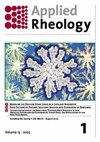Exergy analyses of two and three stage cryogenic cycles
IF 1.8
4区 工程技术
Q1 MECHANICS
引用次数: 1
Abstract
Abstract Cryogenics has an important influence on industry and science. In this study, optimum working conditions are obtained by applying exergy analysis and local optimization methods to two- and three-stage vapor compression cascade cryogenic cycle. The first and second laws of thermodynamics, exergy analysis, and local optimization methods are applied to the two- and three-stage cascade cryogenic cycle. By considering the needs and demands, it is possible to create new cycles by adding new devices and/or new stages to these cycles. The results of the optimum operating conditions are obtained for the two- and three-stage vapor compression cascade cryogenic cycle. It is seen that to achieve high COP values and high efficiency; it is necessary to reduce the compression ratio of the compressor as much as the fluid allows. For the two-stage cycle, the minimum total work required for cryogenic cooling is around P 7 = 2,400 kPa. The COP value is 0.30 between P 7 = 2,400 and 2,800 kPa, and the maximum exergy efficiency is obtained around 0.235. It is seen operating the first-stage compressor at high pressures increases the total losses of the entire cycle from 7,500 to 18,550 kW. The increase in total exergy losses is around 247%, and operating the first-stage compressor at high pressures increases the exergy efficiency of the entire cycle. The increase in total exergy efficiency is around 160%. When the second-stage compressor is operated at low pressure, the COP value increases by 2%, the exergy efficiency increases by 20%, and the exergy losses decrease by around 40%.两级和三级低温循环的火用分析
低温学对工业和科学有着重要的影响。在本研究中,采用火用分析和局部优化方法对二级和三级蒸汽压缩叶栅低温循环进行了优化。将热力学第一定律和第二定律、火用分析和局部优化方法应用于二级和三级串级低温循环。通过考虑需求和要求,可以通过在这些循环中添加新设备和/或新阶段来创建新的循环。得到了二级和三级蒸汽压缩叶栅低温循环的最佳操作条件。可以看出,要实现高COP值和高效率;有必要在流体允许的范围内尽量降低压缩机的压缩比。对于两级循环,低温冷却所需的最小总功约为p7 = 2,400 kPa。在p7 = 2400 ~ 2800 kPa范围内,COP值为0.30,火用效率在0.235左右达到最大值。在高压下运行第一级压缩机,整个循环的总损失从7500千瓦增加到18550千瓦。总的火用损失增加了247%左右,在高压下运行第一级压缩机提高了整个循环的火用效率。总能源效率提高约160%。当二级压缩机低压运行时,COP值提高2%,火用效率提高20%,火用损失降低40%左右。
本文章由计算机程序翻译,如有差异,请以英文原文为准。
求助全文
约1分钟内获得全文
求助全文
来源期刊

Applied Rheology
物理-力学
CiteScore
3.00
自引率
5.60%
发文量
7
审稿时长
>12 weeks
期刊介绍:
Applied Rheology is a peer-reviewed, open access, electronic journal devoted to the publication in the field of applied rheology. The journal provides the readers with free, instant, and permanent access to all content worldwide; and the authors with extensive promotion of published articles, long-time preservation, language-correction services, no space constraints and immediate publication.
 求助内容:
求助内容: 应助结果提醒方式:
应助结果提醒方式:


